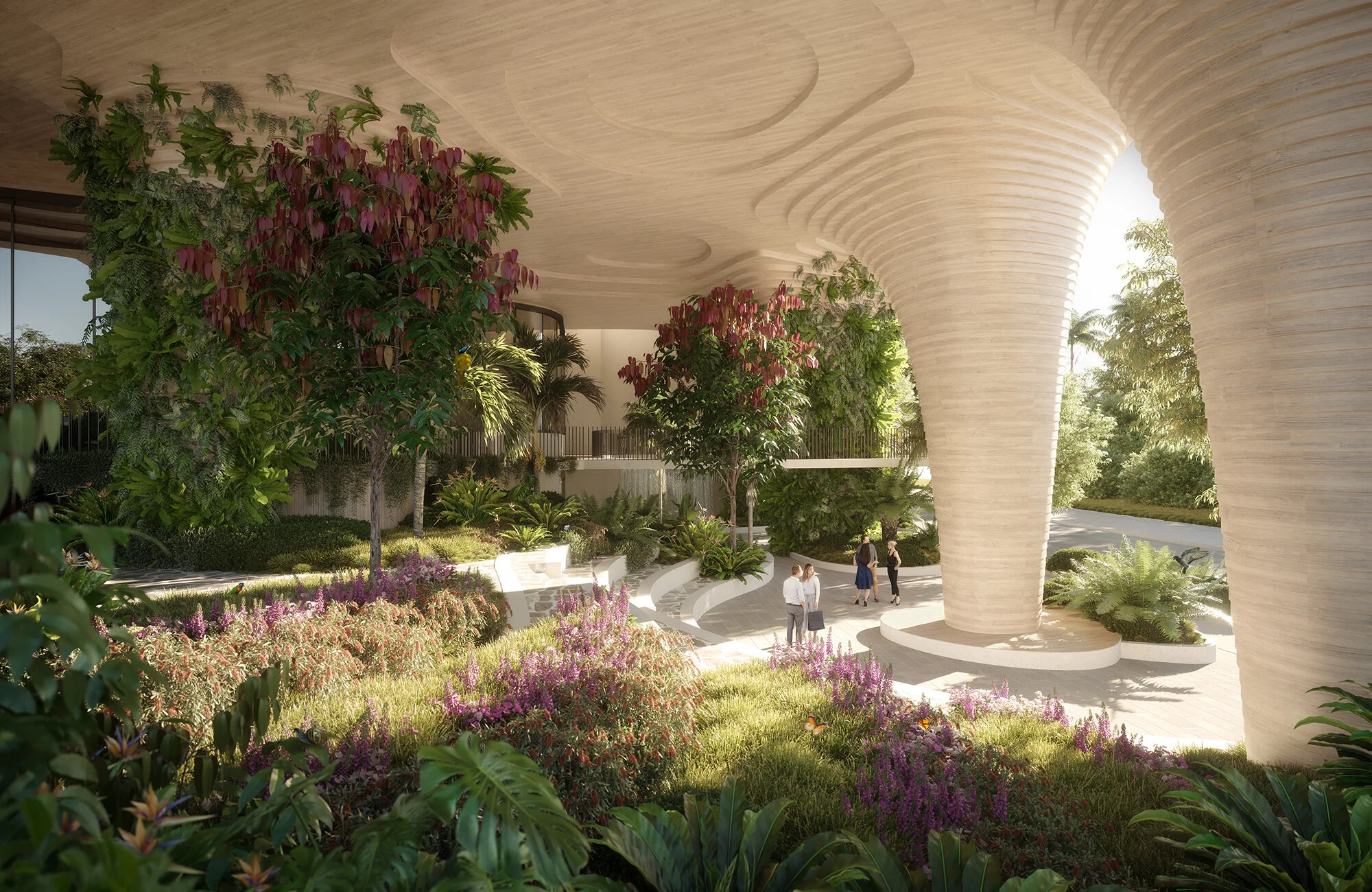An urban forest for Brisbane
A Koichi Takada-designed, mixed-use residential high-rise, is poised to become one of the world’s most densely forested vertical gardens.
Located in South Brisbane, Urban Forest was created for Aria Property Group, and in the words of its designers, “strikes the balance between environmental, social and economic sustainability, prioritising people, planet and profit.”
Urban Forest in Brisbane.
Koichi Takada’s ambition is for Urban Forest to be the world’s greenest residential building, setting the benchmark for subtropical and sustainable apartment buildings. Their target is a 6-star Green Star rating, equivalent to LEED Platinum.
The 30-storey complex houses 382 apartments with verandah-style balconies, and two storeys of rooftop amenities. Stepped facades are covered in greenery, and the 2,782 square-metre site also features a 1,642 square-metre public park at ground level.
The mixed-use residential high-rise, is set to become one of the world’s most densely forested vertical gardens.
“Vertical planting in high-rise buildings is part of a new movement that sees architects bringing greenery, biodiversity, oxygen and mental health benefits back to high-density city living,” say Koichi Takada.
The thousands of plants packed on to the terraces make a site-to-green ratio of 292 per cent. That includes more than 1000 trees, and over 20,000 plants selected from 259 native species.
Urban Forest will include more than five times the number of trees in nearby Musgrave Park, and act as a green spine connecting the park to Southbank Parklands. Therefore, “the landscape is not just an attractive feature, but is a dynamic, active component of a sustainable building, increasing biodiversity and reducing the ecological footprint of the city.”
The 30-storey complex includes 382 apartments with verandah-style balconies, and two storeys of rooftop amenities.
Urban Forest is lifted on tall, sculptural columns evoking tree trunks, making space for a ground-level public park filled with dappled light, and connecting the building to the public domain. These columns shelter the park, and are a nod to the local architectural tradition of the Queenslander, a style of house raised on a platform and surrounded by a shaded verandah, which suits the local climate of high temperatures and torrential downpours.
Urban Forest is a low-energy building with high water-efficiency, resulting in a low operating cost. The use of recycled water results in a closed-loop, circular water economy, and both the podium and facade planting, all grown from containerised planters, will be watered using an automated irrigation system. About half of Urban Forest’s wastewater run-off will be treated on site and used to irrigate the planting.
Work is set to begin on the complex later this year.
The double storey rooftop will feature two recreation spaces to provide breathing space for city-living, with a pool, outdoor gym and native landscaped gardens. Urban Forest will also have a tourist centre where visitors can earn about the plants on its facade, biodiversity and building design.
“Now is the time to shift towards mass greening,” says Koichi Takada, “with the post COVID-19, I think it’s a great opportunity to pause and rethink and not just adapt, but shift the paradigm from industrial to natural…we need to be embracing more living materiality, living architecture.”
Construction is due to start later this year, with completion expected in May 2024.
The designers say now is the time to shift towards mass greening.




